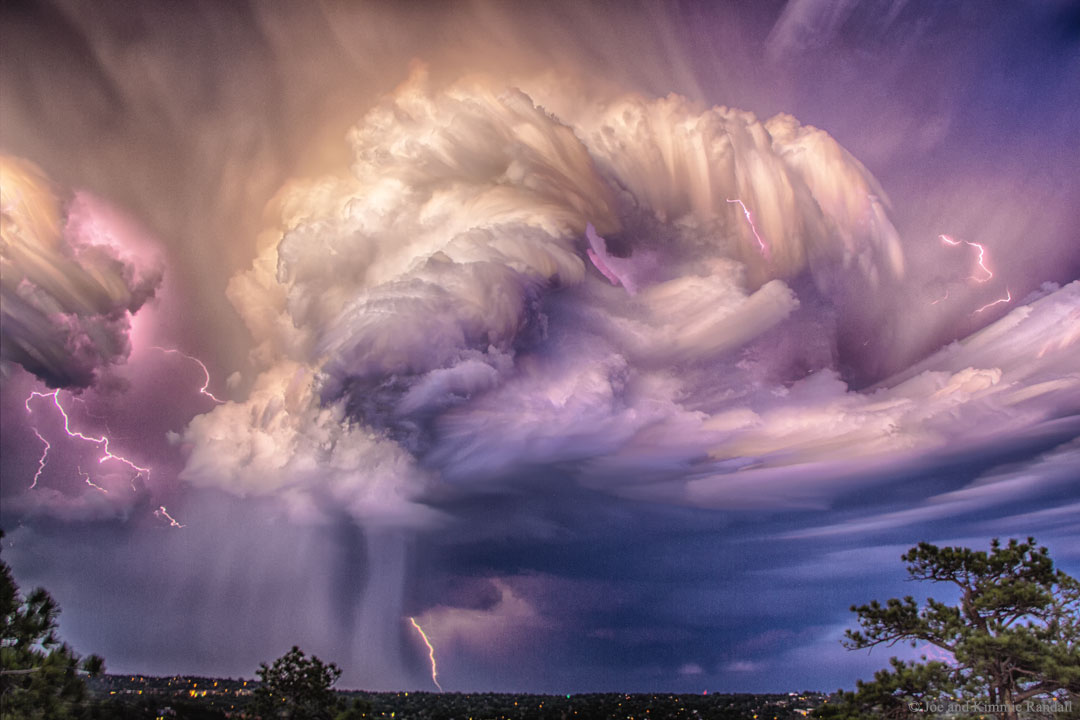2020年9月27日
Lightning over Colorado
Image Credit & Copyright: Joe Randall
Explanation: Have you ever watched a lightning storm in awe? Join the crowd. Oddly, details about how lightning is produced remains a topic of research. What is known is that updrafts carry light ice crystals into collisions with larger and softer ice balls, causing the smaller crystals to become positively charged. After enough charge becomes separated, the rapid electrical discharge that is lightning occurs. Lightning usually takes a jagged course, rapidly heating a thin column of air to about three times the surface temperature of the Sun. The resulting shock wave starts supersonically and decays into the loud sound known as thunder. Lightning bolts are common in clouds during rainstorms, and on average 44 lightning bolts occur on the Earth every second. Pictured, over 60 images were stacked to capture the flow of lightning-producing storm clouds in July over Colorado Springs, Colorado, USA.
Follow APOD in English on: Facebook, Instagram, or Twitter
Tomorrow’s picture: stellar ribbons
美国科罗拉多州上空的闪电
影像提供与版权: Joe Randall
说明: 你曾经满怀敬畏地看着雷暴云吗?欢迎加入凡人一族。怪异的是:闪电到底是如何产生的,至今仍然是热门的研究题材。我们只知道在某些云内,上升气流携带的冰晶撞击较大较软的冰霰,造成小冰晶带正电,当分离的电量够大之后,就会发生快速放电(闪电)。闪电的通道通常相当曲折,并且极快速的把窄小通道内的气体加热到太阳表面温度的3倍之多。而所造成的激波,起先以超音速传播,接着衰减成隆隆的雷声。闪电是暴雨期间很常见的景观,而平均来说地球每秒会发生44个闪电。上面这幅叠加了60张照片的影像,记录了2016年7月笼罩在美国.科罗拉多州.科罗拉多泉上空的一个雷暴云的气流。
在以下网址关注英语版APOD:Facebook,Instagram,或Twitter
明日的图片: stellar ribbon







